Castles You Can Tour in North Coast Croatia
- Jessica Cerović

- Nov 20, 2024
- 9 min read
Updated: Mar 28
Croatia's history goes way back to the 6th and 7th centuries and is very complex with different empires and monarchies residing here over the years. It's no wonder there are castles dotting the countryside along the north coast of Croatia. If you're a fan of medieval history, this is where you need to visit. One of the most common kinds you will see in this area are Frankopan castles. The Frankopans and Zrinskis were noble families that ruled parts of Croatia between the 11-17th centuries. Many castles have been well-preserved or are in the process of being restored. Some offer tours, have museums and hold special events. Kraljevica Castle has a restaurant inside and Castle Belaj is now also a winery. Ancient castles in north coast Croatia are located in the regions of Kvarner, Istria and Gorski Kotar, and on the island of Krk.

Kvarner
This castle was originally built by the Illyrians, then occupied by the Romans, Goths, Franks and eventually the Frankopans, who expanded and upgraded it. A triangle shaped fortress with towers, a courtyard, the Chapel of St. Helen, a parish church and bell tower.
This castle sits at the top of a hill overlooking the city of Rijeka and the Kvarner Bay. It was built by the Frankopans and contains towers, a courtyard, cistern and main entrance with a drawbridge.
READ: Travel Guide to Rijeka for more information.
This castle sits at the top of a hill overlooking the town and the Bakar Bay and is one of the last Frankopan castles built. A triangular shaped fortress with two towers, courtyard, cistern, four kitchens, two dungeons and several spacious halls.
This Frankopan castle was an important fortress in the medieval town’s defense against the Ottomans. Square and round towers remain as well as a few town walls, other buildings, a church with a bell tower and a chapel.
This castle is located on a hill right next to the sea at the entrance of Bakar Bay. The Frankopans used Kraljevica harbor for their town of Hreljin, and let the Zrinskis, who married into the family, stay in Kraljevica. A rectangular shape with four large towers, an inner courtyard, a basement, ground floor, first floor and a later built second floor. The inside of the castle was very luxurious with leather wallpaper, marble fireplaces, marble mosaic floors, marble door frames and a special room called the Museum. Konoba Fran Krsto Frankopan is the name of the restaurant located inside Kraljevica Castle and offers authentic Croatian dishes with meat and seafood specialties.
Just a few minutes walk away from this castle is the Old Town of the Zrinski's. This Frankopan complex has a lower and upper castle with the lower castle most likely beginning as a fortress built even before the Frankopans took ownership. The Church of St. Nicholas was originally a chapel and a warehouse for salt and what once was farm buildings are now civic houses.
This castle is located on a small hill overlooking the Vinodol Valley and was originally wooden. The Frankopans built round towers, high walls and an enclosed courtyard with residential buildings, storerooms, cellars and cisterns. The entrance used to have a drawbridge over a moat. Next to the castle is the Church of St. Stephen, the Parish Church of St. Domnius and Drivenik Cemetery.
* This castle holds a special place in my heart because when I’m in Croatia I get to look at it every day. The town of Drivenik is where my father-in-law was from and where he is now buried with other relatives. This is also where my husband grew up and he even has a tattoo of this castle on his arm.
This Frankopan castle is one of the least well preserved after being damaged by an earthquake, a landslide and being ransacked by thieves. Built along a rocky cliff, high above the Vinodol Valley, with an irregular square shape, due to the terrain, and round towers on the corners.

Badanj Castle in the Vinodol Valley
This fortress was called the "Guardian of Vinodol" from the 4th to 14th centuries. Located in between the towns of Crikvenica and Tribalj. It was a lookout point for the Roman Empire and its military road. It is in the process of being restored but much of the foundation and walls remain.

This Frankopan Castle was built on the foundation of the Church of the Assumption of the Blessed Virgin Mary and later became a monastery teaching spiritual culture, education, art, sciences, medicine, pharmacy and more. A large structure with a round tower that over the years has also been a hospital, children’s home and resort.
This castle was located in the center of town and was one of the strongest and longest lasting of the Frankopans, but all that remains today is the square tower, called Kvadrac. There were double walls, a courtyard, administrative and residential buildings, another tower that was round, a cistern and columns with arcades.
This Frankopan castle was located in the center of town, above the Vinodol Valley, but all that remains today is the square tower, called Turan. There were double walls, a courtyard, administrative and residential buildings and another tower that was round. The inside of the tower shows remnants of when it was used as a prison.
This Frankopan castle is located on a hill just outside of the town of Ledenice and was built on the foundations of a Roman settlement. There are remains of walls, fortified towers, one being a square defensive tower used as a prison, St. Stephen’s Church, bell tower and circular cemetery.

Nehaj Castle in Senj
This medieval fortress was completed in 1558 under the supervision of Croatian Captain and General Ivan Lenković and can be seen on the hilltop from anywhere in town. Loopholes, cannon holes, a cistern, remains of St. George Church, officer rooms and artillery barracks are still well preserved.
Istria
Dvigrad, translates to "two cities," originally these ancient Roman towns were called Moncastello and Castel Parentino. In the 1st century it became Dvigrad Castle. Wars and disease harmed the castle and its people over the centuries. Remains include walls, three town gates, three towers, the main square, palace, military quarters, citizens homes and Saint Sophia Church.
This castle is first mentioned in the 1st century during the Roman Emperor Oton II. It began with a ground floor and two upper floors, a square tower, walls, a bell tower, a chapel dedicated to the Madonna and a few other buildings. As warfare changed over the years, the castle changed as well, and in the 19th century, after many additions, it became a purely residential building for many different noble families over the years.
This 11th century castle served a military and supervisory role and was owned throughout the years by several different families. There is a main tower, defensive walls, courtyards, residential building, military quarters and Saint Mary Magdalene Church. A fire destroyed much of the castle in the 17th century and it was never fully rebuilt.
Also known as the Rota Castle, it was first mentioned in the 11th century. It had a residential function and was owned by many families over the years. In the 16th century, it gained its trapezoid shape with a square tower by the Rota family. It was abandoned in the 19th century and since then has not been restored.
READ: Day Trip to Istria for more sightseeing ideas.
This 12th century castle sits high on a hill near the Učka and Ćićarija mountain peaks. The name comes from "cliff of rescue or refuge," as well as "goat's peak." There are stairs carved into the rock that lead up to the castle, as well as residential houses, walls, two semi-circular towers, a prison and Saint Hadrian Church. Several different families lived in the castle over the years.
Colmo Castle in Hum
Today, the town of Hum is known as "the smallest town in the world," but in the 12th century Colmo Castle was in the center. Through the centuries, wars destroyed the castle and its current owners or new owners renovated it until the 17th century when the entire town was burned down. The Church of the Assumption of the Blessed Virgin Mary now sits where the castle used to be. The tiny town still has a loggia, noble and citizen homes and parish church with priest residence.
Roč Castle in Roč
All that has been preserved of this 13th century castle is a tower. The town had famous Glagolitic priests living here and it was the center of Glagolitic literature.
This 13th century castle is one of the best preserved castles in Istria. Its slightly elevated location and close proximity to what was the Venetian and Austro-Hungarian border made it an important defensive fortress. Besides protecting people, food and supplies, the castle was a place for economic activities and had a residential palace, an armoury, two jails, clocktower and watchtower, It has been burned and restored twice, once in the 16th century and again at the end of WWII.
This 16th century castle was built by the Barbo family and many other noble families have lived here over the years. The castle is a registered Historical Heritage Site of Croatia. From the 17th-19th centuries it served as a judicial administrative headquarter, but most recently it has been owned by the Belaj family where they also run two wineries, Dvorac Belaj and Podrum Belaj. They have been in the business of winemaking for over five centuries. Offering tours of the vineyards and wine tastings.
Gorski Kotar
Not an actual castle, but I think fitting to this theme, I definitely recommend staying at the Heritage Hotel Frankopan, in the town of Ogulin, while in Gorski Kotar. This 4 star hotel is located in the center of town and offers a restaurant, tavern, wine cellar and atrium used for special events.
This is the only highland castle that changed ownership from the Frankopans to the Zrinskis and then eventually back to the Frankopans. A two-story building with towers on the corners, an interior courtyard, arcade columns, the Chapel of St. Florian and a garden.
This Frankopan castle with a church dedicated to St. Mary was demolished by the Ottomans and made into an Orthodox Monastery. The castle’s tower was turned into a bell tower and the church was expanded.
This castle was built by the Frankopans and has had additions made over the years. Most recently it was restored in Romanesque style and an additional tower and spire were added.
This castle was originally made of wood and was built by the Frankopans. Later, the Zrinskis used the foundation of the castle and rebuilt it out of stone. A large, two-story structure with a pyramid shaped roof, several defensive elements, St. Mary Magdalene Church and three secret underground passages.
This castle was originally built by the Frankopans and was later acquired by the Zrinskis. A four building complex with a central courtyard, two towers, defensive walls, and a secret tunnel.
Island of Krk
Krk Castle in the city of Krk
This medieval castle is located in the center of the city and was built by the first Frankopans, the Counts of Krk, between the 12thand 15th centuries. It includes Roman ramparts, four towers, walls, atrium and cistern.
Košljun Monastery in the Bay of Punat
This Frankopan castle was located on the island of Košljun and was at first their summer residence and Glagolitic Benedictine Abbey of St. Mary. Later, with the help and donation of the Frankopans, the Franciscans made the island into a monastery with a church, Chapel of St. Bernardine, cemetery, park, gardens and museum.
This medieval castle was the first castle acquired by the first Frankopans, the Counts of Krk, and is also known as the Rovoznik Fortress. It consists of a courtyard, main room and kitchen with pantry.
It's hard to travel around north coast Croatia and not see a castle. It's a pretty unique place for a photo, special moment or event. Especially for someone like me, who is from the US, where we don't have medieval anything unless you go to a Renaissance Fair, and it's just not even close to the real deal. Whether you're a history buff or not, it's exciting to experience these ancient structures.
Many have been to the southern coastal part of the country, like Dubrovnik to take a "Game of Thrones Tour", visited the city of Split as one of their cruise itinerary ports, or stopped off at one of the islands, like Korčula, Hvar and Brač, but most have not seen the north coast regions of Croatia and we highly recommend you do.
Whether it's your first time traveling to the country or just the next time you're here wanting a more authentic, less touristy experience. Europeans have been vacationing at this hidden gem for decades but others seem to completely overlook it. Come see for yourself what makes the north coast so special.
North Coast Croatia Travel Agency specializes in travel to Croatia and surrounding European countries. Providing consultations, custom itineraries, pre-designed theme itineraries, summer beach rentals and a travel blog. Booking flights, accommodations, cruises, tours, rental cars, transfers, bus/train/ferry tickets, travel insurance and more!
Book a FREE 30 minute Travel Consultation with me to discuss planning your trip to Croatia!
Happy Travels! Sretan Put!
Follow us on Social Media: @northcoastcroatia
Join our Public Facebook Group:
Join our Private Facebook Groups:
and
I use affiliate links at no added cost to you.
Companies give me a small percentage of their sales if you use their link through my website.
Thank you for your support.










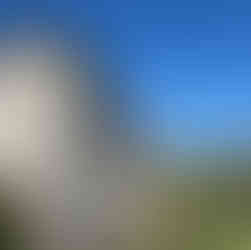



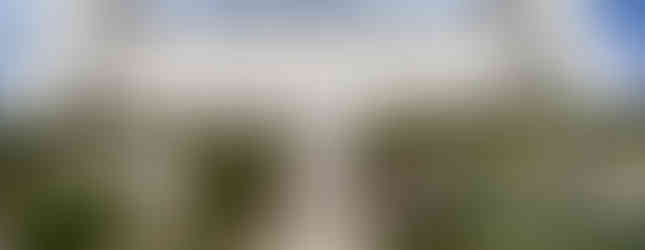








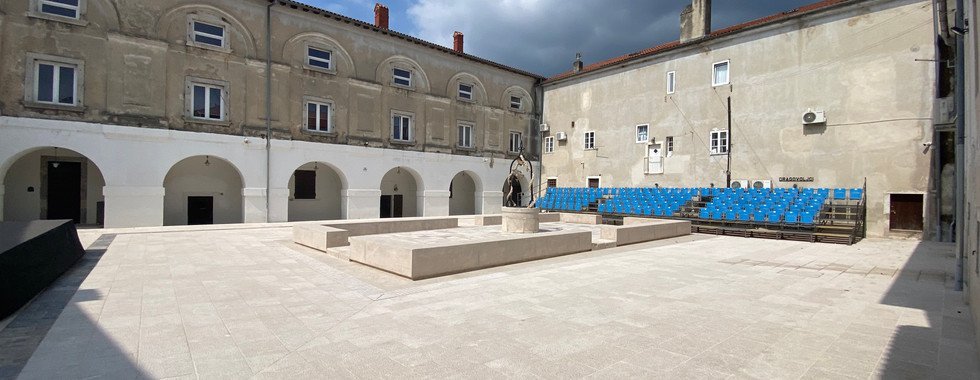












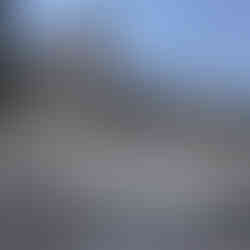



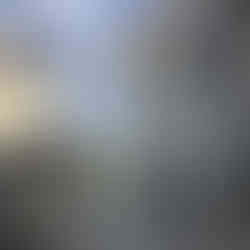


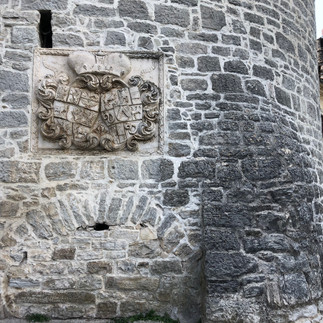



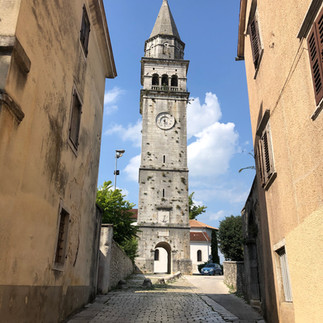







Comentarios